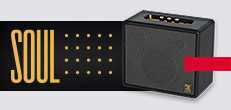Public address systems in museums play a crucial role in managing events and exhibitions. A high-quality sound system not only ensures that information is delivered clearly and effectively to all attendees, but it also enhances the visitor experience. In this article, we will analyze the main advantages of having a suitable public address system in a museum environment.
1. Improving communication with visitors
One of the main functions of public address systems in museums is to enable the dissemination of important messages. In large and crowded spaces, such as exhibition halls or auditoriums, it is essential that instructions and announcements are heard clearly. This is especially relevant during large-scale events, where effective communication can prevent confusion and ensure visitors are well informed at all times.
Additionally, a well-designed public address system can also be used to guide attendees to different areas of the museum, providing additional details about exhibitions or important logistical information, such as closing times or safety warnings.
2. Enhancing the quality of exhibitions
Museums often organize temporary exhibitions and special events that require the broadcast of audio to enhance the visitor experience. A good sound system allows the integration of audio elements such as narration, music, or sound effects that complement the exhibited works. This creates an immersive experience that enriches the visit and helps capture the audience’s attention.
Furthermore, for exhibitions that rely on multimedia material, public address systems in museums are essential to ensure that audiovisual presentations are of high quality, offering clear sound without interference. This not only improves the perception of the exhibition but also strengthens the museum’s reputation as a professional and well-equipped space.
3. Efficient event and activity management
Many museums organize educational activities, talks, and conferences as part of their cultural program. For these events, it is essential to have a public address system that ensures the message reaches all attendees clearly. Public address systems in museums amplify the speaker’s voice, distribute sound evenly throughout the room, and avoid echoes or distortions that could hinder speech comprehension.
Moreover, an adequate public address system allows better management of unforeseen situations during events, such as the need to give evacuation instructions in case of emergencies or to make last-minute announcements.
4. Flexibility and adaptability for different spaces
Museums typically have a wide variety of spaces, ranging from small exhibition rooms to large auditoriums. A museum’s public address system must be flexible enough to adapt to the needs of each environment. This includes the ability to adjust volume, speaker distribution, and the incorporation of wireless microphones or portable devices for more dynamic events.
The versatility of the sound system is crucial to ensure that all areas of the museum, regardless of size or function, have optimal audio quality. This way, public address systems are not only useful in large events but also in small activities or guided tours.
5. Increased security
Security is a priority in any museum, and a good public address systems in museums is a key tool to ensure it. In emergency situations, such as fires or evacuations, it is crucial to transmit clear and quick instructions to visitors and staff. An efficient sound system allows immediate announcements throughout the facility, ensuring that people move orderly toward emergency exits or safe areas.
In many cases, public address systems are also integrated with alarm and access control systems, further reinforcing their role as an indispensable security tool within the museum.
6. Improved accessibility
A key aspect of modern museums is accessibility, and public address systems in museums are essential for making content and events accessible to all visitors, including those with hearing or visual impairments. By integrating technologies like induction loops, public address systems can transmit sound directly to hearing aids and other devices, facilitating the participation of people with hearing problems.
Additionally, the use of public address systems also allows guided tours and audio explanations to be accessible in multiple languages, improving inclusion and ensuring a broader diversity of visitors can fully enjoy the museum experience.
7. Resource optimization
Having a good public address system in museums not only benefits the visitor experience but also contributes to the optimization of technical and human resources. An efficient system allows fewer staff to handle information dissemination since announcements and notices can be managed centrally. This reduces the need for direct assistance and allows staff to focus on other important tasks.
Additionally, a high-quality sound system requires less maintenance and repairs, which in the long term results in significant savings in operational costs. Investing in durable and adaptable public address systems helps improve the overall efficiency of museum operations.
Conclusion
Having a good public address system in museums offers multiple advantages for event and exhibition management as well as for the visitor experience. From improving communication and security to enhancing presentation quality, accessibility, and resource optimization, a quality sound system is an essential investment for any gallery. By providing a clear and immersive auditory experience, museums can ensure their events and exhibitions run smoothly and professionally.





